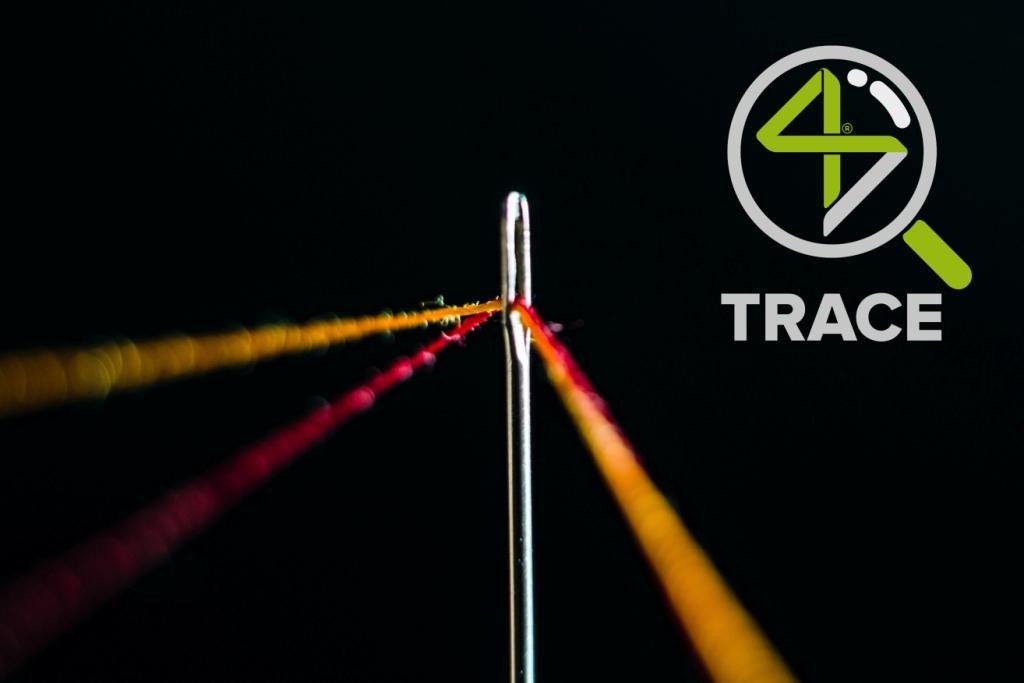There is no true sustainability without transparency, but you can’t get far without methodologies and support tools.
The United Nations Global Compact defines traceability as the ability to identify and tell the story, distribution, location and application of products, components and materials to ensure the reliability of sustainability claims in the fields of human rights, health and safety at work, of the environment and anti-corruption.
In simpler words, traceability is what allows the consumer to know the characteristics of a product – including compliance of manufacturing companies with environmental and social laws – and then to make an informed purchase choice. A physical expression of traceability is for example labels describing the genesis of a dress from the selection of the raw material to its arrival in the store, through an indentification system recorded along the entire supply chain.
Advantages are also evident for brands and companies in the fashion sector, for which tracing internal processes, monitoring suppliers and involving them in the business model transformation towards sustainability can prove to be crucial.
Choosing traceability, for a brand, means being able to verify the compliance of each stage of production with national regulations and international standards; it means improving one’s reputation, strengthening relations with stakeholders and being more reliable; it means efficiently managing suppliers and reducing the impact of risks from the complexity, fragmentation and dislocation of the production chain.
The barriers to transparency
An implicit element of traceability is transparency, i.e. the choice of making the information on the product and processes available to all the above actors, taking care that they are clear, accessible, understandable and comparable.
The challenge is demanding for several reasons. The first, which we’ve already introduced, consists in the widespread and growing fragmentation and complexity of the production system, made up of plants and operators located in various parts of the world and therefore subject to different rules and standards at regional, national and international level.
Another problem is represented by technological barriers and mainly affects the links in the supply chain that operate in less advanced countries. But the technology necessary for the collection and exchange of data and information costs money, even where it is accessible, even for those who can afford it on paper.
Last, but not least, is the issue of privacy and data security, especially those which are subject to intellectual property protection due their business strategic value.


Fashion Revolution’s votes to brands
What is the state of the art? How do fashion companies behave in terms of transparency and traceability? Every year, Fashion Revolution rates the brands’ efforts in this regard.
The Fashion Transparency Index, in particular, measures them on five dimensions (Policy & Commitments, Governance, Tracciabilità, Audit, Spotlight) and weighs the results to get a total score. Well, this score saw an increase of two percentage points in 2020 compared to the previous year, from 21% to 23%.
The traceability rating
As regards traceability, more specifically, the average score was only 16%, compared to a 52% recorded in terms of company policies and commitments. Read together, the two percentages suggest the existence of a still too marked gap between results and good intentions.
On its own, the low percentage on traceability can be explained by the fact that less than half of the 250 brands interviewed disclose information on companies in their supply chain. Only 40% publish Tier 1 supplier lists and even fewer – just 24% – declare which and how many processing plants include wet processing factories. Only 7% appoint raw material suppliers.
The rating for environmental performance
And now we come to the environment chapter of the Fashion Revolution report. 78% of the brands interviewed publish their own sustainability policies on the use of energy resources and the CO2 emission reduction. However, only 16% give specific information on greenhouse gas emissions produced along the supply chain.
The same trend is also for the water resource management: 52% of brands highlight their policies for a more informed use of water, which in 42% of cases would also be extended to their suppliers. Only 31%, however, calculate the water impact of their plants and just 14% publish the water footprint annually, also considering the wet processing parts of their supply chain.
As for the waste generated during the production phases, the feedback is disheartening: only 4% – 11 out of 250 brands – disclosed the data and only 3% the volumes of products deliberately destroyed.
From a social standpoint, only 6% of brands declare a supplier payment policy within 60 days. 11% say they guarantee labor costs without price renegotiation and 23% a living wage for supply chain workers.


The Planet Tracker survey
Another recent report is that of the non-profit financial think tank Planet Tracker, which offers some good food for thought on the subject.
The study focuses on the water risk which companies in the fashion supply chain are exposed to – those with wet processing, in particular – and on how this risk impacts on investors. The most interesting part, in our opinion, is that which concerns the brands, the initiatives they should undertake for a more sustainable management of water resources, which means more oriented to traceability.
Planet Tracker’s report is a real call to action towards brands, which have the economic and communicative power to push the business model transformation towards sustainability.
Brands, you can read, should extend supply chain information beyond Tier 1 suppliers, so that investors, financiers and customers can understand the true scale of the environmental costs and risks associated with manufacturing.
They should take greater responsibility for suppliers, through consistent purchasing behavior and a risk-based due diligence approach throughout the supply chain.
Finally, they should devote part of their substantial financial resources to support supplier investments in new equipment and innovative techniques. At the same retail prices, a 0.5% reduction in the brands’ net operating margin (EBIT) would allow for approximately USD 220 million to be recovered for the supply chain.
What to do: the experts’ voice
The numbers – and the numbers’ interpretations – show a pretty clear picture. First of all, it is evident that we cannot speak of true traceability if we stop at the first link in the supply chain. “We can read the data provided by Fashion Revolution and Planet Tracker, among others, as a good start – says Francesca Rulli, CEO and Founder of Process Factory / 4sustainability® – but there is still a long way to go. Traceability, which is a pillar of sustainability, implies the involvement of the production chain in its whole, through know-how, methodologies and supporting tools. Available options are still few … This is why we decided to include in our sustainability roadmap an initiative designed specifically for monitoring suppliers and collecting the key information for their evaluation. This initiative is called Trace 4sustainability® and consists of a protocol to measure suppliers level by level and select those with the lowest environmental and social impact. The ultimate goal is to build a rewarding system that distributes the value on the most deserving supply chains, thus communicating to the market the transparency of each choice”.

Concept by Process Factory/4sustainability®

